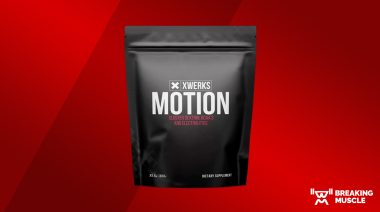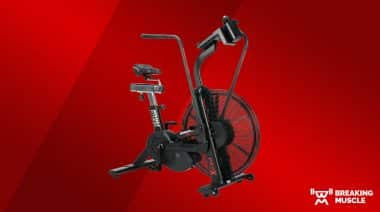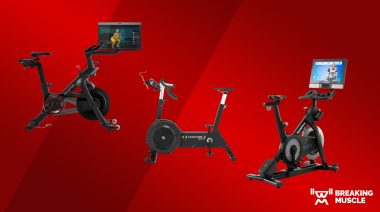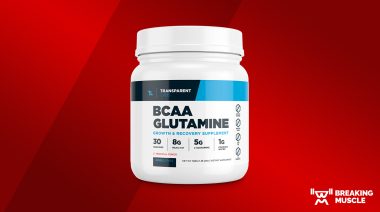The Cardio Code by Kenneth Jay may be my favorite training book I’ve read this year. Filled with science and detailed insights into the research, it ticks a lot of boxes for me.
Having known Kenneth Jay for a few years, I know he doesn’t hold back out of fear of rocking the boat. He’s even willing to go back and rethink his own approach to things.
Why Cardio?
No one seems to have a set definition of what cardio training should look like or what the benefits are. As I said in my article, Circuit Training Doesn’t Get You Fitter, fitness has to be defined by whatever task you are aiming to improve. If you want to call something “cardio,” then what you’re talking about is training to improve or increase your cardiovascular system. In other words, you’re looking to improve VO2 max.
Reading this book was the first time I’ve ever seen someone take the time to dig into what is needed to stimulate those kinds of changes. Sure, there are many bro-science-training plans that claim to increase your conditioning, and they may, but none of the ones I’ve seen have tackled what is required to make changes to the cardiovascular system.
Strength Training for Fitness
Jay wastes no time in killing some sacred cows in his book. Like many people, for years I thought anything that got my heart rate up could be thought of as good for my cardiovascular system. Early in the book, Jay explores cardiac training’s effects and discusses the differences between what happens when you lift heavy weights and what happens when you run. Did you know your heart undergoes different reactions during concentric and eccentric contractions, just like your other muscles? And did you know the changes that come from lifting heavy weights aren’t good for your heart in the long term?
For me, this was a light bulb moment that also went a long way in explaining why some of my own clients seem to be virtual non-responders to cardio training. Strength training thickens the heart, making it less pliable. Like other muscle, some degree of stretchiness is actually a good thing, as it means that when you start to work harder your heart can accommodate more blood. In chronic strength trainers, the heart is stiff with thicker walls, limiting blood supply. This takes time and patience to overcome, and is a reason why so many gym-goers struggle with cardio.
The Heart Rate Debate
Following on from this topic, Jay looks at how much oxygen is used during various activities. I always thought if my heart pumped a certain number of times it meant I was working equally hard, regardless of the activity. But that’s not so, particularly when it comes to weight training.
During weight training, regardless of the lifts used, you simply can’t engage your muscles quickly enough to cause the action that takes place during traditional cyclic forms of cardio. When muscles are engaged for long periods they actually cut off blood flow, which lowers the amount of oxygen able to pass through them and decreases the intensity of work you’re doing when compared to your VO2 max. In other words, just having a high heart rate is not indicative of getting a cardio workout.
As Jay states in his book, “Having a high heart rate doesn’t mean you’re doing cardio. If that was the case I could scare you into better shape.”
Research-Based Information
One of the things I’ve always liked about Jay is that he bases his ideas on research. His first book, Viking Warrior Conditioning, was the basis for his Masters thesis, and he has continued on that research-based path in The Cardio Code.
Before reading this book, make sure you’ve got your science hat on. Jay goes through many research papers and discusses the important points of each. Then he uses all that knowledge to form sensible training plans at the end of the book. The research covers all kinds of topics, from skipping rope, to boxing, to running, to circuit-style weight training. You won’t find the poorly conducted, cherry-picked research you often see from fitness authors.
Training Plans
The training plans included in the book are brief in explanation, but sufficient. While I think a few of them would be near-death experiences, particularly for a good runner, the basic and intermediate plans are well thought out. That’s not to say the sessions wouldn’t work – they would. Not only that, but if you read the book you’ll also understand how and why they work and be able to come up with your own training plans.
The Bottom Line: Use the Right Tool
The conclusion of the book is simple – if you want to get fit (increase your VO2 max), you need cyclic, low-load activities like running and riding. At no point does Jay tell people not to lift weights, which I know many people will mistakenly think. What he says is that research clearly shows if you want to increase your VO2 max, circuit-style training isn’t the best method for anyone other than absolute beginners.
I love that Jay says pretty much what I’ve been saying for years – use the right tool for the job. If you want strength, then lift weights. If you want work capacity – that combination of strength plus muscular endurance – then circuit training is a great idea. But if you want to increase VO2 max, you had better think of doing some traditional cardio training.
Overall this is a great book, and I loved it. I tried to come up with some things about it that I didn’t like, and I simply can’t. If this book were on every trainer’s bookshelf, it would help stop the confusion over how to help people get fitter, and we could all do our jobs better.
“The Cardio Code” eBook is available for $24.99 at CardioCode.dk.






